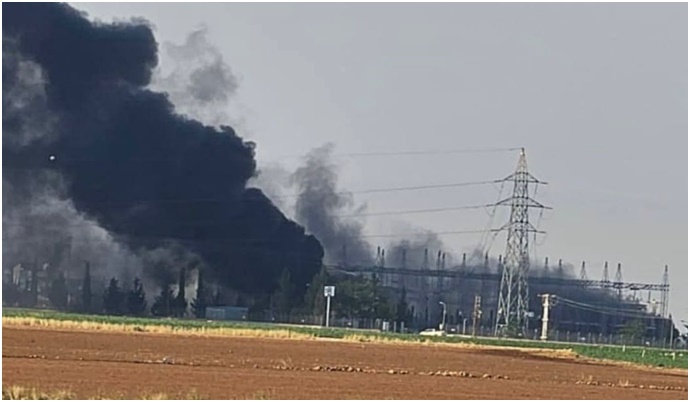Challenging conditions in prices… While the energy problem varies in the regional context, more challenging conditions are created for Europe compared to the US and China, which partially left the supply issue behind. Europe is facing an energy crisis where utilities depend on coal and oil. In a concept where nuclear capacity will remain offline to a certain extent as of January in France and Germany, the increase in energy prices may increase due to export and general supply problems.
Conditions for rising energy prices… Higher energy prices threaten to derail Europe's economic recovery, just as the coronavirus micron strain spreads. As of this week, the cold weather in the Northern Hemisphere is also increasing short-term electricity prices as renewable energies cannot keep up. Because at the substitution point, wind power generation is insufficient in terms of operating the reactor capacity, so the total power generation is at a point where it cannot meet the demand. Prices also rose as shipments from Russia via an important pipeline diverted. The status of Nord Stream 2 will be decisive in this respect.
The role of renewable energy… Germany's plan to phase out nuclear power plants by 2022 and the mass introduction of electric vehicles is expected to reduce excess power supply times. In this process, traditional raw materials and power sources will still play a role in the transition to renewable energy. Adoption of environmental, social and governance engagement to drive the transition to renewables and net zero emissions globally is in the process of being stepped up. Long-term potential problems accelerating the physical effects of climate change are in a critical area for renewable energy transformation. We see China starting to advance its plans to become carbon neutral by adapting its economy to new factors such as green spending, emissions targets and carbon market trading. The issue of how to phase out fossil fuels in climate change will be an issue that global decision makers will focus on in the next ten years to control global warming below 2 degrees Celsius.

Bloomberg Brent Crude Oil Inflation-Adjusted Price Index… These spot crude oil and petroleum product inflation-adjusted values are derived using Bloomberg's data. The index is calculated by dividing the spot price by the US consumer price index. An example: spot West Texas Intermediate Crude Oil Price adjusted for inflation = (WTI Spot / US YoY CPI Index) * 100.
Risks and elimination from inflation… The increase in energy prices in 2H21 created significant risks for electricity and gas suppliers. Low natural gas levels at European storage facilities could keep gas and electricity prices high, at least until the end of the winter season. Prices are likely to be more moderate towards March-April 2022, easing pressures on energy suppliers. Under increasing demand conditions, OPEC+ will continue to manage supply, at least in the short and medium term. The situation in the commodity markets is still not entirely clear due to the emergence of the Omicron coronavirus variant, which could result in travel restrictions and increase price volatility in the near term.
Oil… Oil demand has recovered this year, almost reaching pre-pandemic levels, supported by the economic recovery and increased activity. Demand may weaken in 1Q22, possibly resulting in the market going from short to surplus due to OPEC+'s decision to increase production by 400,000 bpd in January, along with releasing strategic oil reserves in the US. However, the recovery in oil demand could continue until late 2022. UAE, Kuwait, Iraq, Russia and other countries are considering increasing production to monetize their large reserves. The balance of power gathered on the axis of Russia on the OPEC+ side in order to reduce the response of the US shale gas production may cause the supply balances to be observed at the point of mutual response with the US.
Conclusion? The energy industry may continue to experience the high price impact due to rising wholesale gas and electricity prices. This can be a system-wide problem. In consumer prices, energy costs are not the only factor. At the same time, taxes on invoices are also effective. Many governments in Europe have reduced taxes or VAT on invoices to help end consumers. The increase in energy costs is not only challenging the consumer side, but also the business side. In the basic needs that have come to the fore since the beginning of the pandemic, the demand for heating in the winter period also has an important place. This is a problem as incomes are not increasing at the same pace and energy bills expected to increase by at least 50% on a consumer basis will push the household financial situation to a worse level. Household and firm budgets may deteriorate due to rising energy prices if benefits are not increased.
Kaynak Tera Yatırım-Enver Erkan
Hibya Haber Ajansı







